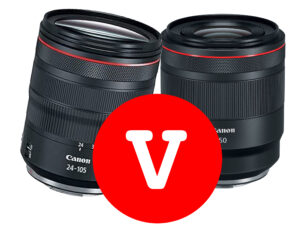If you are in marketing, and producing videos for the web you should be shooting, editing and delivering in 4K from now on. I’ve said it, 720p/1080p is no longer good enough if you want your material to be useful today and into the future.
Granted, there are arguments against shooting and delivering 4K. I call them the IT department types of argument:
- File sizes are huge for 4K
- 4K needs expensive computing power to edit
- The cameras are expensive
- Uploading 4K takes longer because of point 1
Notice though that these arguments are all producer, eg, you centric. But in marketing we are all about the customers, so these don’t (as in shouldn’t) make any sense to us.
Here are the arguments for 4K:
- It is easier than ever for people to stream 4K
- Devices, from high resolution Retina Display mobiles to home theatres and multimedia POS displays in stores support 4K
- Devices that support 4K provide a more immersive experience
- Your content will last longer, and can be enjoyed by more people in the future
Notice these arguments are all about the audience, eg, customer centric. Spot the difference? And don’t worry, customers who are on an internet speed so slow that they can only stream 1080/720/480/320/240p resolutions will still be able to see your 4K content. Remember when you upload a video to YouTube in 4K, it creates a number of conversions in different resolutions to enable everyone to enjoy it.
Thinking about a project I recently delivered in 4K: It was all about the immersion of the audience. And, about being cost effective. I needed to deliver this with a 1 day shoot. I needed a format that forgiving. The 4K/422 system from the Canon XC10 was exactly that, as I could adjust lighting, colour correct, and re crop images in post easier than anything I’ve ever used before. Granted, there were other technologies and features behind the equipment that helped me.
I remember in the early 2000s as a 12 year old feeling so excited that my family had bought a DVD player. We were early adopters. I remember friends coming round and us all admiring the latest movies (I think the first we watched as Gladiator with Russell Crowe) in DVD 720x576px on a CRT display. I tried playing a DVD recently on my 4K 55” TV. It looked crap. 99% of what I consume on that TV is streamed in 1080 or 4K, more 4K in 2017 than before.
I remember one of the first corporate videos I produced for an employer as a humble Marketing Executive many years (about 10) ago. I shot, edited in 1080p (HDV on a Canon XHA1s) and cut in the old Final Cut Pro. But at the time, I couldn’t upload 1080 to anywhere online, and our office internet connection as about 512kbps. So I had to export in 320p. It still sits online and isn’t great to watch. Can’t bear it full screen on my 5K iMac. And when I look at old TV commercials I did even in 2008/2009 I struggle to watch them today.
If you are in marketing, you need your content to last online and deliver results.
Results need to be delivered with online video in providing information to your customers, entertaining them, and driving more web traffic towards you. You can achieve the first 2 here with good content, and point 3 to an extent. But to really harness all 3, you need your content to last and be enjoyed. So, work at the maximum resolution. Always. Deliver at the maximum resolution. Always. You need your material to last. You want to meet your KPIs now and tomorrow don’t you?
Remember an unhappy consumer can film a vlog post about you in 4K and upload it. Why do you insist on only producing your promotion and support materials in 720p?
Think back to search marketing 101. Google, YouTube and others want to provide searchers with the best possible content in response to their search. And, to provide them with a good experience. In 2017 and beyond, content below the optimum resolution of their screen is not a good experience. In just over the past 10 years, people have become more impatient, and more picky. Technology and social issues have seen to that. With YouTube everyone can get a quick fix of entertainment. Technology such as 4K screens on mobile phones and tablets gives people the change to experience immersive content at anytime. We as marketers need to respond to this. Since the 2008 GFC people want to be more informed about their buying choices. They do their research more. Respond. Give your audience the information they want, on a platform they want, and maximise the capabilities of the technology.
So I return to my main point: Shoot, edit, and deliver 4K video as a part of your next marketing campaign. Don’t let the IT arguments get in the way of a modern marketing campaign.







































































